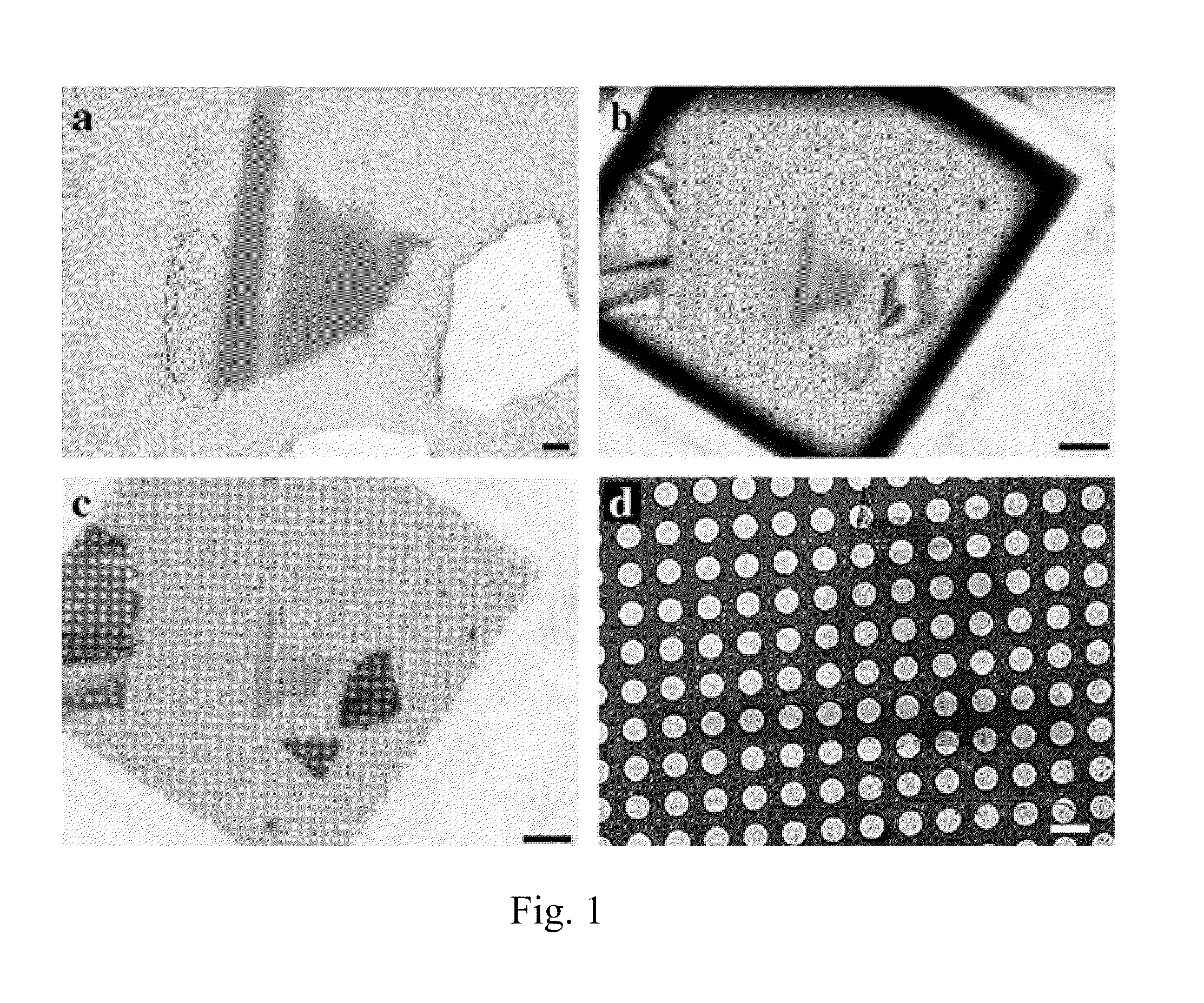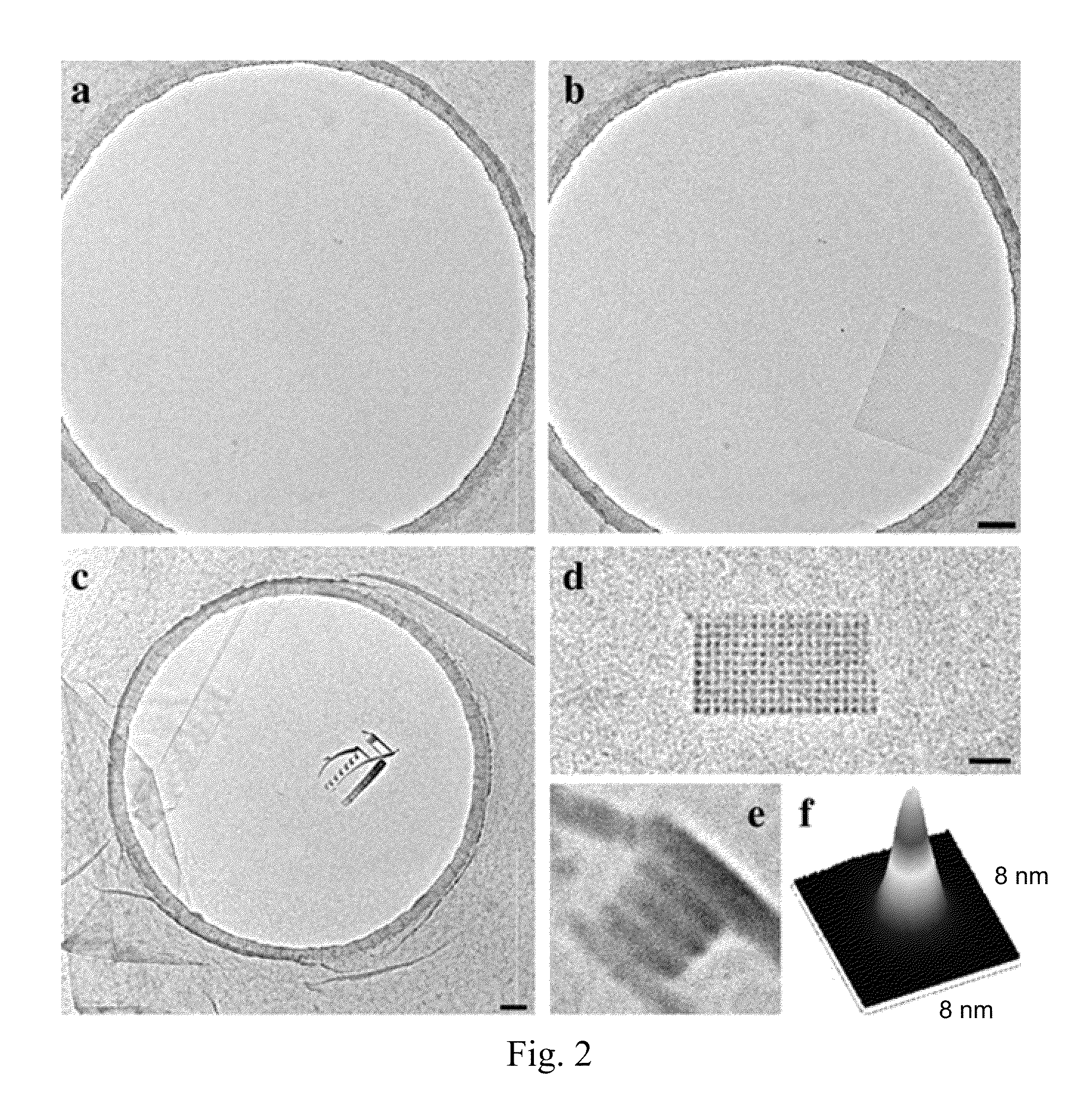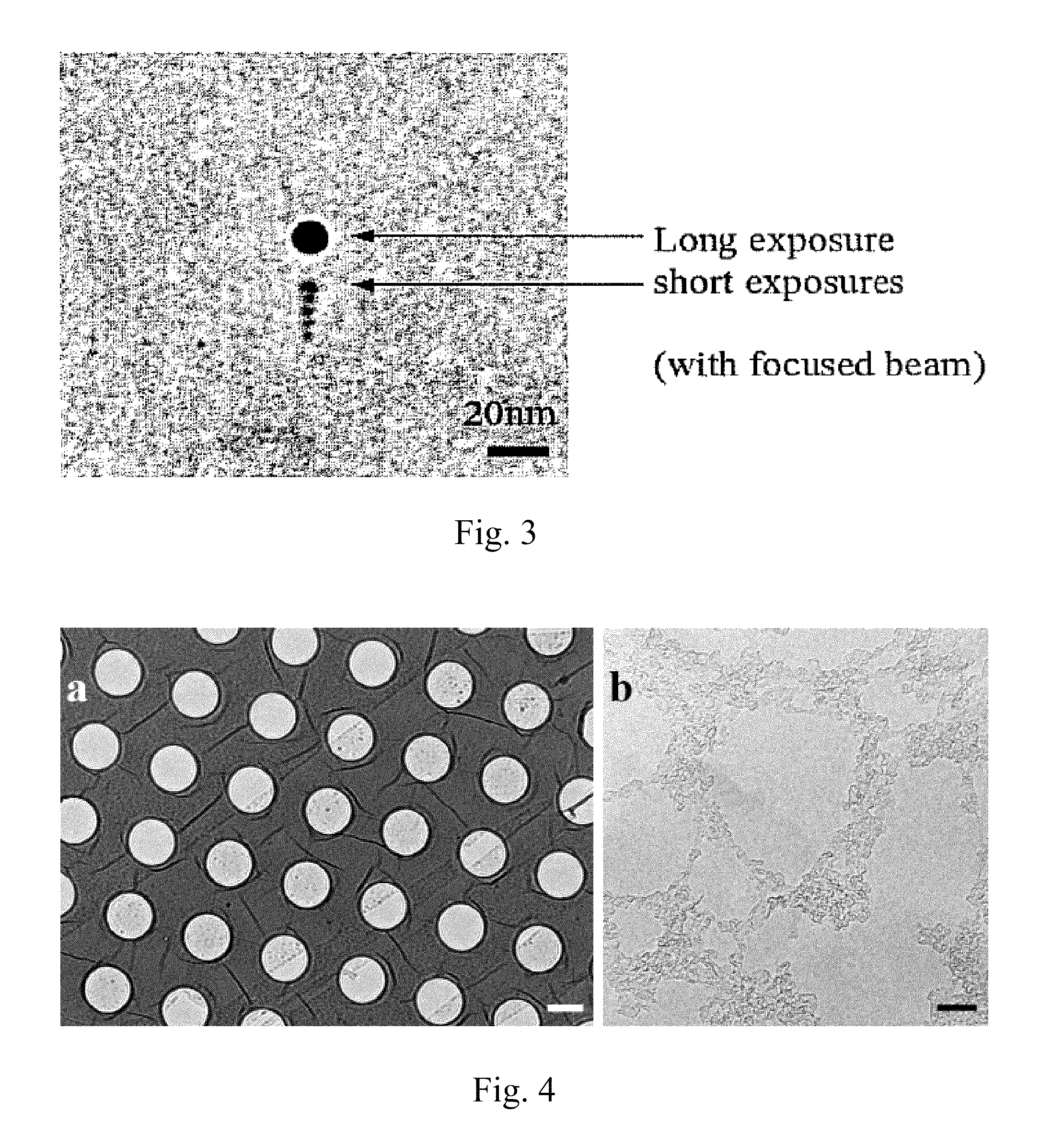Graphene-based structure, method of suspending graphene membrane, and method of depositing material onto graphene membrane
a graphene and membrane technology, applied in the field of graphene, can solve the problems of requiring not only novel materials but also means, and difficult to achieve the degree of control of nanotubes, and achieve the effect of reducing the number of nanotubes, and reducing the cost of production
- Summary
- Abstract
- Description
- Claims
- Application Information
AI Technical Summary
Benefits of technology
Problems solved by technology
Method used
Image
Examples
example 1
Method of Suspending a Graphene Membrane
[0058]Our experimental procedure begins with graphene flakes made by the established “scotch tape” method. In order to suspend graphene membranes, we have developed transfer processes of the graphene flakes to commercially available electron microscopy grids (Quantifoil 200 Mesh gold grids with 1.3 μm holes in the carbon film). In the first method, we start with graphene flakes on a silicon substrate with a 300 nm silicon dioxide layer. We identify graphene flakes by optical microscopy (FIG. 1, Panel a), and place the Quantifoil grid onto the flake. A small drop of isopropanol is added (FIG. 1, Panel b) and left to evaporate. The surface tension of this solvent during evaporation pulls the perforated carbon film into contact with the substrate and graphene flakes (FIG. 1, Panel c). To improve the adhesion, we now heat the sample on a hot plate at 200° C. for 5 minutes. After cooling, we place the substrate with the now well-sticking TEM grid i...
example 2
Method of Suspending a Graphene Membrane
[0059]In another method, we begin with graphene flakes prepared on silicon substrates with a 300 nm silicon dioxide layer and a 10-30 nm layer of polymethylmetacrylate (PMMA). Again, the Quantifoil TEM grid is placed onto the flakes and pulled into contact with the surface by evaporation of a solvent (isopropanol). Contact is improved by heating on a hot plate. The top layer of the substrate is now dissolved in a bath of acetone or methylpyrrolidone. After separating the TEM grid with the graphene flakes from the substrate, it is again transferred to isopropanol before drying. This second method avoids the use of acids or bases (such as potassium hydroxide).
[0060]Just before insertion into the TEM, the graphene membrane samples are again heated on a hot plate to reduce the amount of adsorbates that are present on the sample surface due to the wet preparation and due to air exposure. For the results shown here, samples were heated for 10 minute...
example 3
Imaging and Dynamics of Carbon and Hydrogen Atoms on Graphene
[0064]Observing the individual building blocks of matter is one of the primary goals of microscopy. The invention of the scanning tunneling microscope revolutionized experimental surface science in that atomic-scale features on a solid-state surface could finally be readily imaged. However, scanning tunneling microscopy has limited applicability due to restrictions, for example, in sample conductivity, cleanliness, and data acquisition rate. An older microscopy technique, that of transmission electron microscopy (TEM) has benefited tremendously in recent years from subtle instrumentation advances, and individual heavy (high atomic number) atoms can now be detected by TEM even when embedded within a semiconductor material. However, detecting an individual low atomic number atom, for example carbon or even hydrogen, is still extremely challenging, if not impossible, via conventional TEM due to the very low contrast of light ...
PUM
| Property | Measurement | Unit |
|---|---|---|
| diameters | aaaaa | aaaaa |
| thickness | aaaaa | aaaaa |
| thickness | aaaaa | aaaaa |
Abstract
Description
Claims
Application Information
 Login to View More
Login to View More - R&D
- Intellectual Property
- Life Sciences
- Materials
- Tech Scout
- Unparalleled Data Quality
- Higher Quality Content
- 60% Fewer Hallucinations
Browse by: Latest US Patents, China's latest patents, Technical Efficacy Thesaurus, Application Domain, Technology Topic, Popular Technical Reports.
© 2025 PatSnap. All rights reserved.Legal|Privacy policy|Modern Slavery Act Transparency Statement|Sitemap|About US| Contact US: help@patsnap.com



